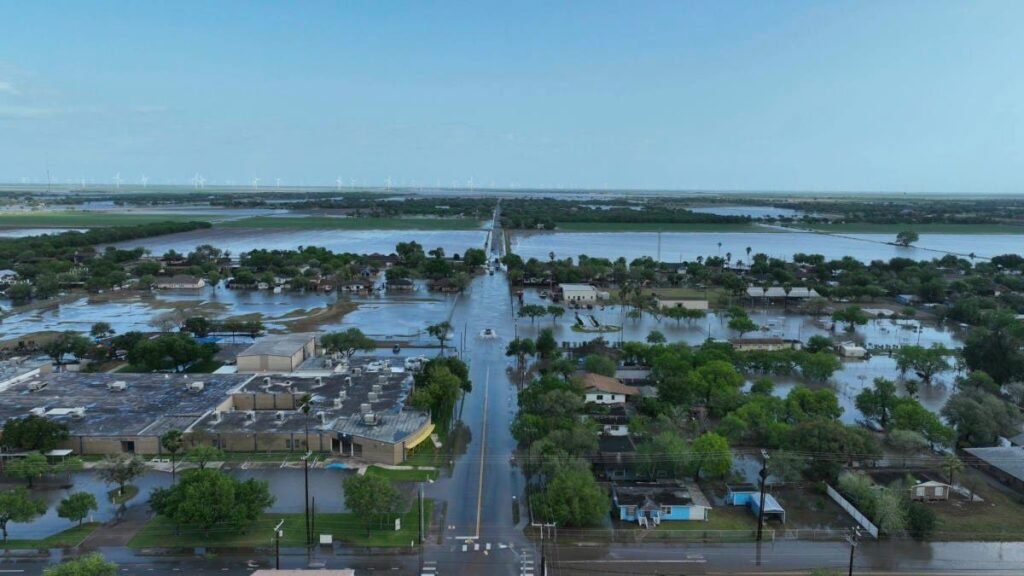Texas Governor Declares Disaster Amid Severe Flooding in the Rio Grande Valley
In response to devastating storms that swept through the Rio Grande Valley, Texas Governor Greg Abbott has officially declared a disaster for four affected counties: Cameron, Hidalgo, Starr, and Willacy. The heavy rains led to significant flooding, causing disruption and urgent rescues throughout the region.
Understanding the Impact of Severe Weather
The heavy rainfall that pummeled the area last week resulted in substantial damage to homes, businesses, and agricultural lands. According to a release from the Texas Division of Emergency Management, the National Weather Service (NWS) had previously issued warnings about possible severe storms and flooding, making the recent events even more alarming.
Floodwaters inundated streets, overwhelmed drainage systems, and disrupted access to various communities. This prompted immediate rescues and the establishment of emergency shelters for those affected. Residents are being urged to stay vigilant, monitor the weather forecast, and formulate an emergency plan in collaboration with state and local officials.
Emergency Response Measures
In light of the recent flooding, the Texas State Emergency Operations Center has been activated at Level II (Escalated Response) to mobilize aid more effectively. Various state agencies have assembled to coordinate relief efforts. They include:
- Texas A&M Task Forces with swiftwater rescue teams
- Texas Parks and Wildlife deploying helicopters and boat units
- Texas National Guard utilizing high-profile vehicles for rescues
- Texas Department of State Health Services providing EMS units
Individuals impacted by the flooding are encouraged to report property damage through the Individual State of Texas Assessment Tool (iSTAT). This reporting tool will help officials gauge the extent of the disaster and assist residents in securing potential federal aid.
The Human Toll of the Flooding
Sadly, reports indicate that at least three individuals lost their lives as a result of the severe weather, with hundreds of rescues conducted across the region. In places such as Harlingen, Cameron County, rain gauges recorded a staggering 21.5 inches of precipitation, as noted by The Texas Tribune. In Alamo, emergency responders carried out over 100 water rescues as residents became trapped in both homes and vehicles.
Governor Abbott’s Commitment to Recovery
Governor Abbott expressed his commitment to supporting local communities affected by the flooding. In a statement released by the Texas Division of Emergency Management (TDEM), he said: "Texas continues to support local communities in South Texas impacted by heavy rainfall and flash flooding. Today, I issued a disaster declaration to help local officials respond and to protect Texans." He also acknowledged the tireless efforts of first responders, emphasizing their essential role in deploying critical resources and assisting residents in distress.
Ongoing Challenges and Future Concerns
While addressing the immediate crisis caused by flooding, officials are also keeping an eye on potential wildfire threats in the northern and western regions of the state. As of the latest updates, much of the Texas Panhandle and West Texas remains under a red flag warning, highlighting the need for continued vigilance.
For ongoing updates and crucial information regarding the disaster response, residents are encouraged to stay tuned to local news sources and government advisories. The collaboration between state agencies and local officials is vital as Texas navigates through this challenging time.
Conclusion
The recent flooding in the Rio Grande Valley serves as a reminder of the powerful forces of nature and the importance of community preparedness. As efforts to assist those affected continue, ongoing solidarity and support from both state and local authorities will be instrumental in the recovery process. Stay informed, stay prepared, and together, Texans can overcome even the most challenging circumstances.


